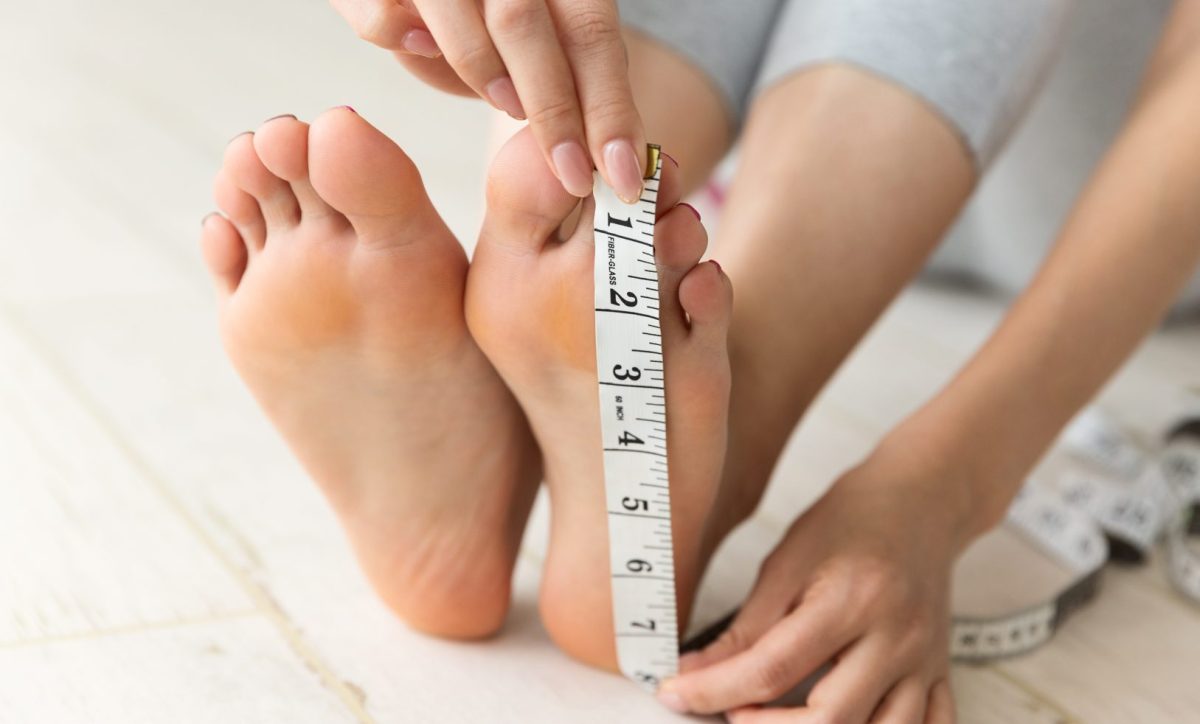Whether you seek top-notch athletic footwear or stylish casual kicks, it is crucial to don well-fitting shoes that provide comfortable support for your feet. Ill-fitting shoes can result in discomfort, aching, and blisters. Regrettably, wearing improperly sized shoes is a more prevalent issue than one might anticipate.
In the quest for finding the perfect fit, understanding the correlation between foot length and shoe size is an essential step. Whether you’re a seasoned shoe aficionado or embarking on a shoe shopping spree, having a reliable foot length to shoe size chart at your disposal can be a game-changer.
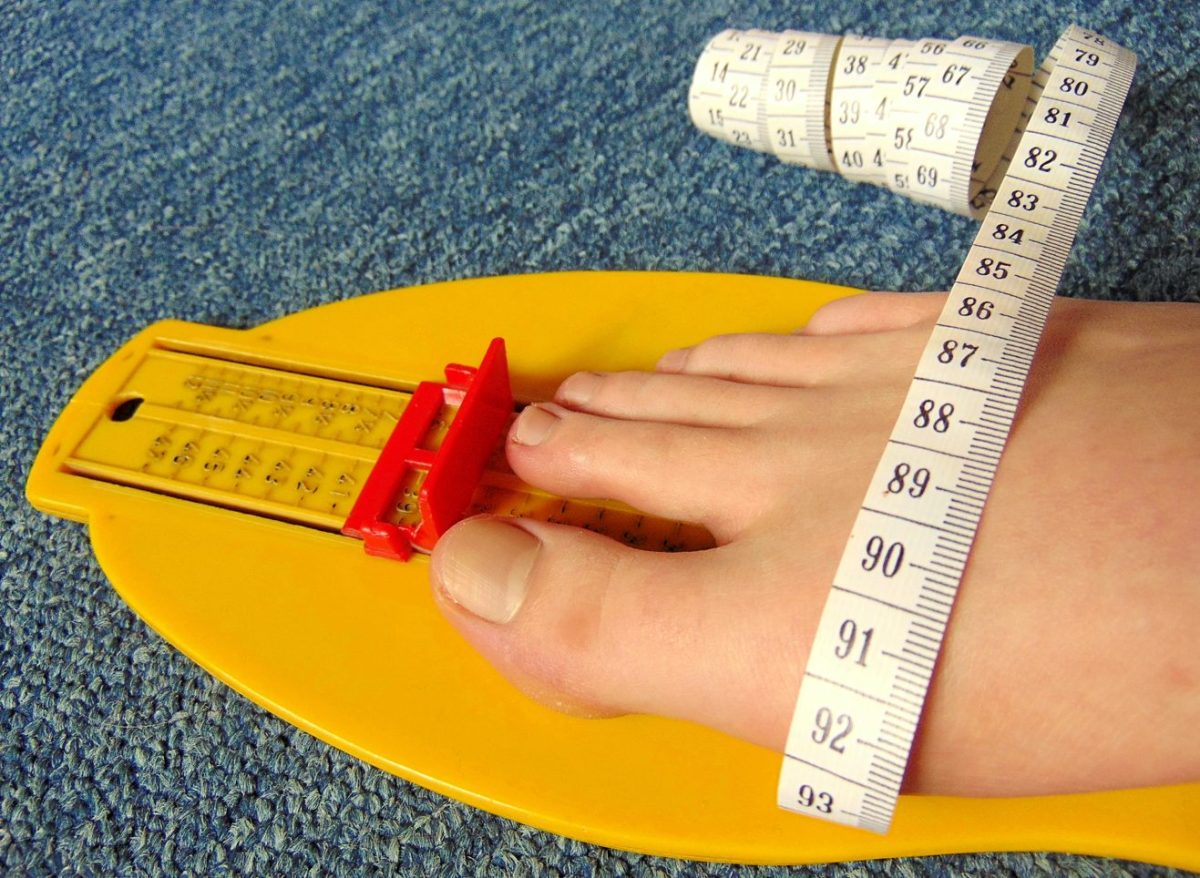
This comprehensive guide serves as a compass, bridging the gap between foot measurements and the corresponding shoe sizes, ensuring that every step you take is supported by the perfect pair of shoes. Dive into the world of precise measurements and discover the art of achieving unmatched comfort and style with our foot length to the shoe size chart.
Foot Length To Shoe Size Chart For Men
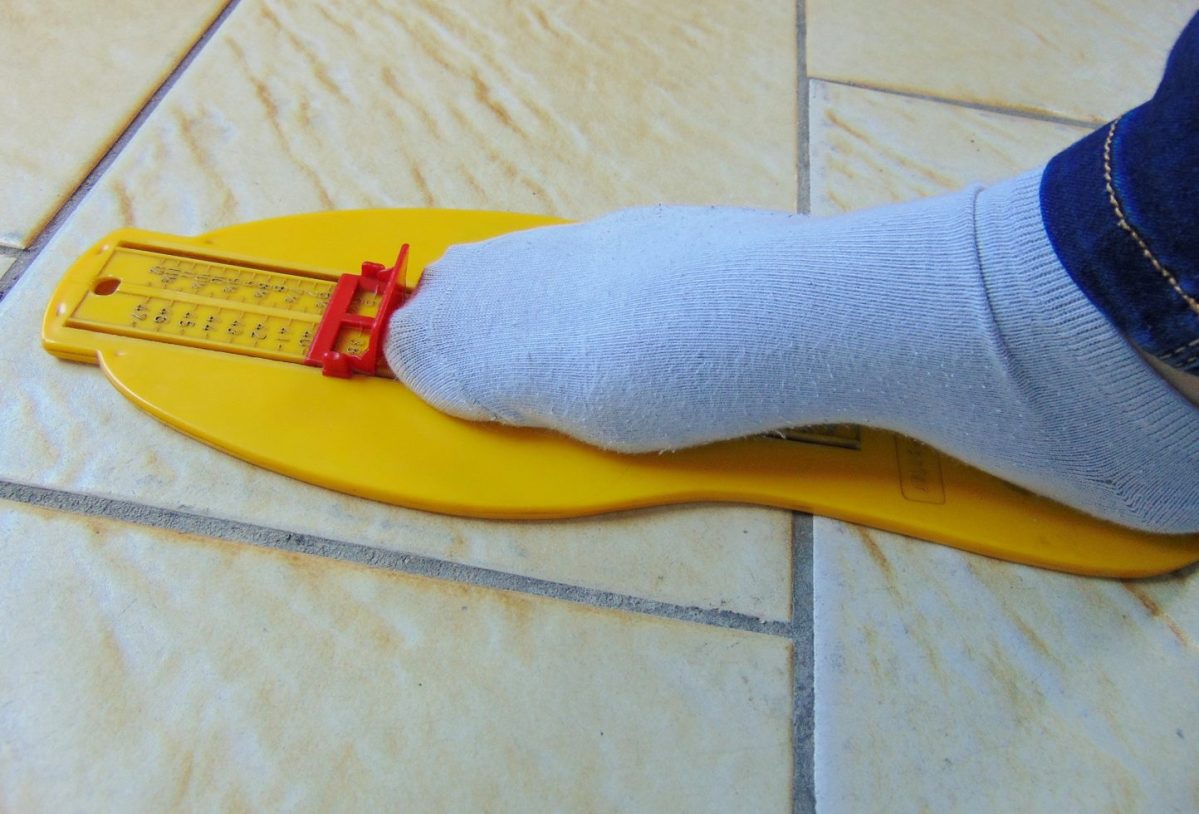
Once you have accurately measured your foot, the next step to finding the perfect pair of shoes is to compare your measurements against a size chart. Keep in mind that even though some shoe brands might utilize comparable size scales, it’s imperative to review their individual size charts before making a purchase. This is because each brand has its unique sizing system and approach to fit, which can impact the final fit of the shoe. By taking the time to consult the size chart, you can ensure a comfortable and optimal fit for your feet.
| Shoe Size
(Men’s) |
Length of Foot
(Cm) |
Length of Foot
(Inches) |
| 6 | 23.7 | 9 5⁄16 |
| 6.5 | 24.1 | 9 1⁄2 |
| 7 | 24.5 | 9 11⁄16 |
| 7.5 | 25 | 9 13⁄16 |
| 8 | 25.4 | 10 |
| 8.5 | 25.8 | 10 3⁄16 |
| 9 | 26.2 | 10 5⁄16 |
| 9.5 | 26.7 | 10 1⁄2 |
| 10 | 27.1 | 10 11⁄16 |
| 10.5 | 27.5 | 10 13⁄16 |
| 11 | 27.9 | 11 |
| 11.5 | 28.3 | 11 3⁄16 |
| 12 | 28.8 | 11 5⁄16 |
| 12.5 | 29.2 | 11 1⁄2 |
| 13 | 29.6 | 11 11⁄16 |
| 13.5 | 30 | 11 13⁄16 |
| 14 | 30.5 | 12 |
| 14.5 | 30.9 | 12 3⁄16 |
| 15 | 31.3 | 12 5⁄16 |
| 15.5 | 31.7 | 12 1⁄2 |
Foot Length To Shoe Size Chart For Women
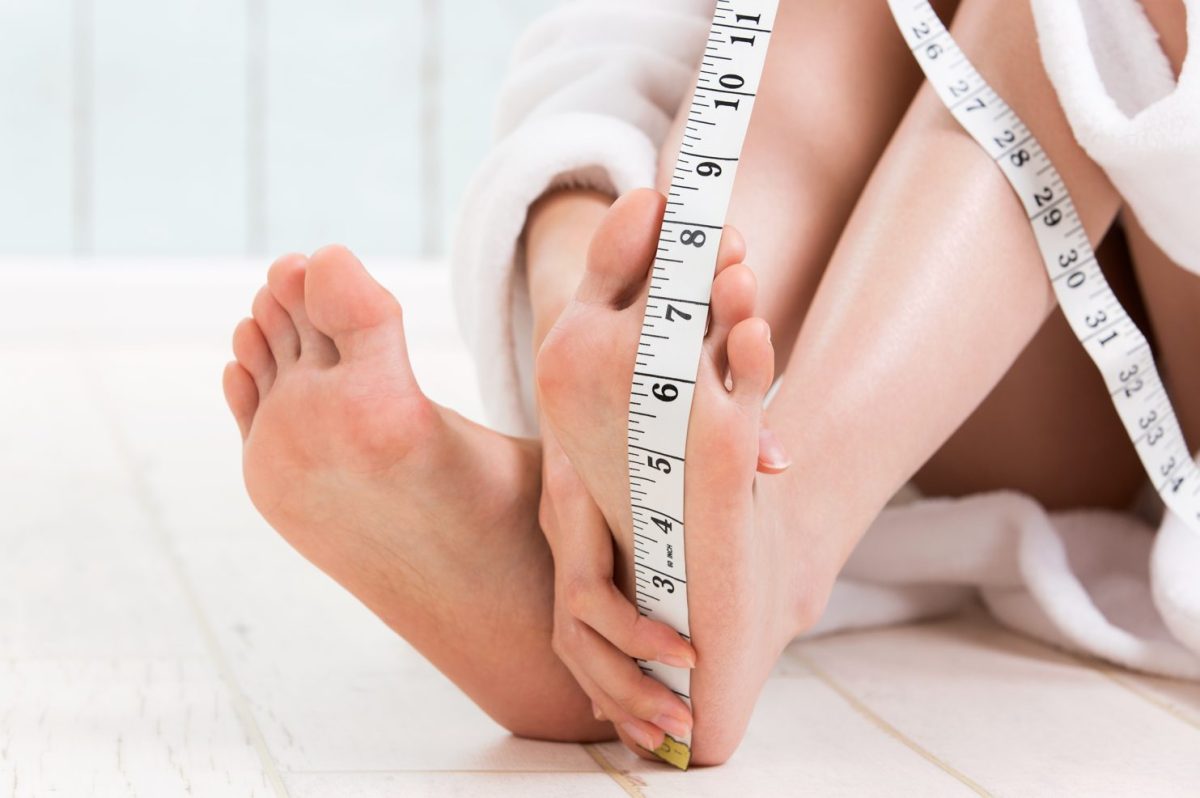
In the realm of shoe sizing, a fascinating disparity of 1.5 sizes distinguishes men’s and women’s footwear. Allow me to illustrate this intriguing phenomenon: should you possess a penchant for women’s shoes and wear a size 8, chances are that in the realm of men’s shoes, a fitting size would be 6.5. Nonetheless, it is prudent to exercise caution as certain shoe styles embrace a unisex approach to sizing. Thus, it is advisable to diligently peruse the product details before embarking upon a new footwear acquisition.
| Shoe Size
(Women’s) |
Length of Foot
(Cm) |
Length of Foot
(Inches) |
| 5 | 22 | 8 11⁄16 |
| 5.5 | 22.4 | 8 13⁄16 |
| 6 | 22.9 | 9 |
| 6.5 | 23.3 | 9 3⁄16 |
| 7 | 23.7 | 9 5⁄16 |
| 7.5 | 24.1 | 9 1⁄2 |
| 8 | 24.5 | 9 11⁄16 |
| 8.5 | 25 | 9 13⁄16 |
| 9 | 25.4 | 10 |
| 9.5 | 25.8 | 10 3⁄16 |
| 10 | 26.2 | 10 5⁄16 |
| 10.5 | 26.7 | 10 1⁄2 |
| 11 | 27.1 | 10 11⁄16 |
| 11.5 | 27.5 | 10 13⁄16 |
| 12 | 27.9 | 11 |
| 12.5 | 28.3 | 11 3⁄16 |
| 13 | 28.8 | 11 5⁄16 |
| 13.5 | 29.2 | 11 1⁄2 |
| 14 | 29.6 | 11 11⁄16 |
| 14.5 | 30 | 11 13⁄16 |
Comprehensive Guide To Accurately Measuring Foot Size
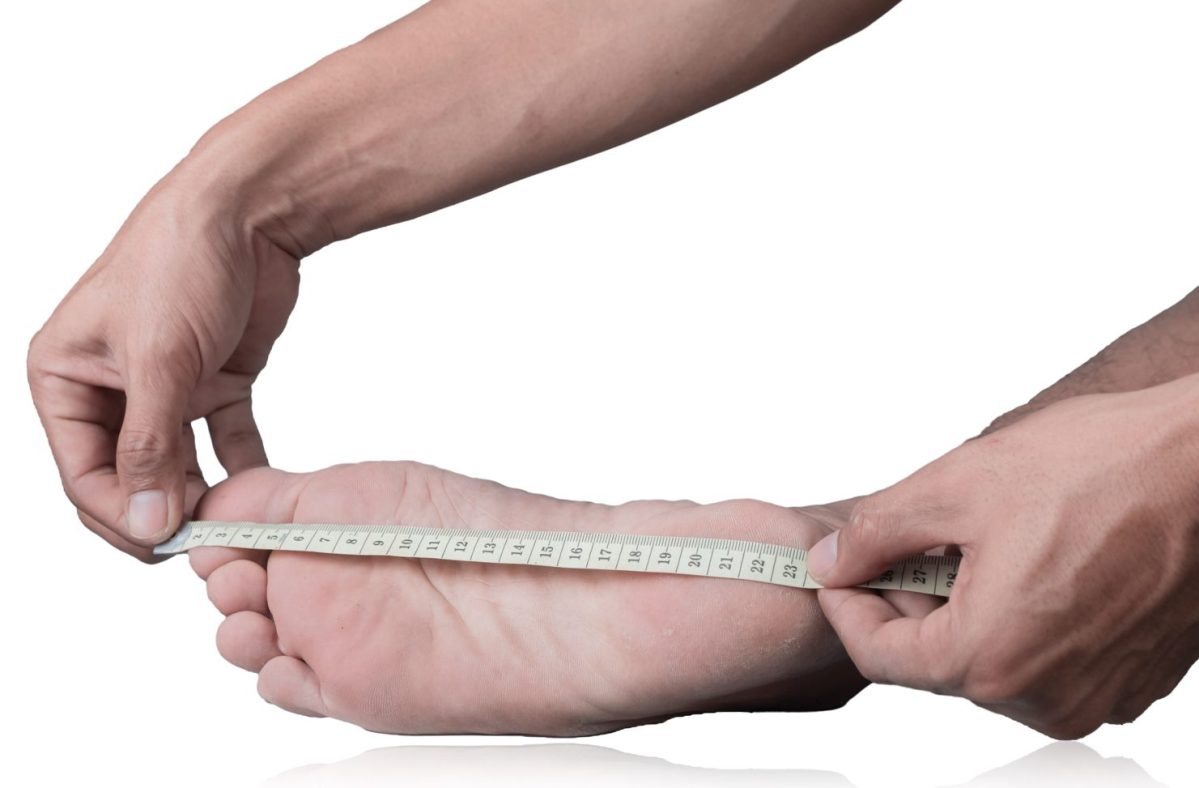
In the event that a brand neglects to provide a comprehensive shoe size chart, the inclination to compose a strongly worded letter (or, let’s be candid, express frustrations on social media) may arise. However, we propose an alternative course of action: measure your feet. Length alone does not suffice; width is equally significant.
Although not all shoes explicitly indicate their width, often represented by decipherable letters denoting “narrow” or “wide,” they should. Familiarity with both length and width is the foundation of comfort, and with basic school supplies at hand (ruler, paper, pencil, etc.), the process is remarkably straightforward:
- To ensure precise measurements, it is recommended to measure your feet towards the end of the day when they are slightly swollen from daily activities, as they may exhibit a marginally larger size compared to the morning. In order to achieve optimal accuracy, it is advisable to wear the same type of socks that you intend to pair with the shoes being measured.
- To commence the measurement process, securely affix a sheet of paper to a rigid surface, ensuring that it remains steadfast without any slippage. Position yourself in an upright stance, with one foot confidently placed upon the paper while maintaining a slight bend in your knees. Alternatively, if you prefer a seated position, ensure that your feet are firmly grounded on the floor.
- Equipped with a pen or pencil pointed straight downwards, proceed to meticulously trace the outline of your foot onto the paper. To enhance accuracy during this step, it is advantageous to enlist the assistance of another individual who can help stabilize your feet, thereby ensuring that they remain motionless throughout the tracing process, thus capturing the most precise measurements.
- Once the first foot has been measured, replicate the aforementioned procedure with the other foot. It is common for individuals to possess slightly different foot sizes; hence this step helps to account for such variations.
- Upon completion of the tracing process for both feet, promptly mark the tip of the big toe and the outermost point of the heel. Subsequently, employ the aid of a ruler or measuring tape to determine the distance between these two marked points. This particular measurement accurately represents the length of your feet. To attain the utmost precision, it is recommended to utilize a ruler calibrated in centimeters rather than inches.
- If your feet are of different sizes, it is wise to compare your recorded dimensions to a detailed size chart using the measurements of the bigger foot. By following this guideline, you will ensure a more accurate determination of the suitable shoe size for your toes, guaranteeing optimal comfort and fit.
7 Signs That You’re Wearing the Wrong Shoe Size
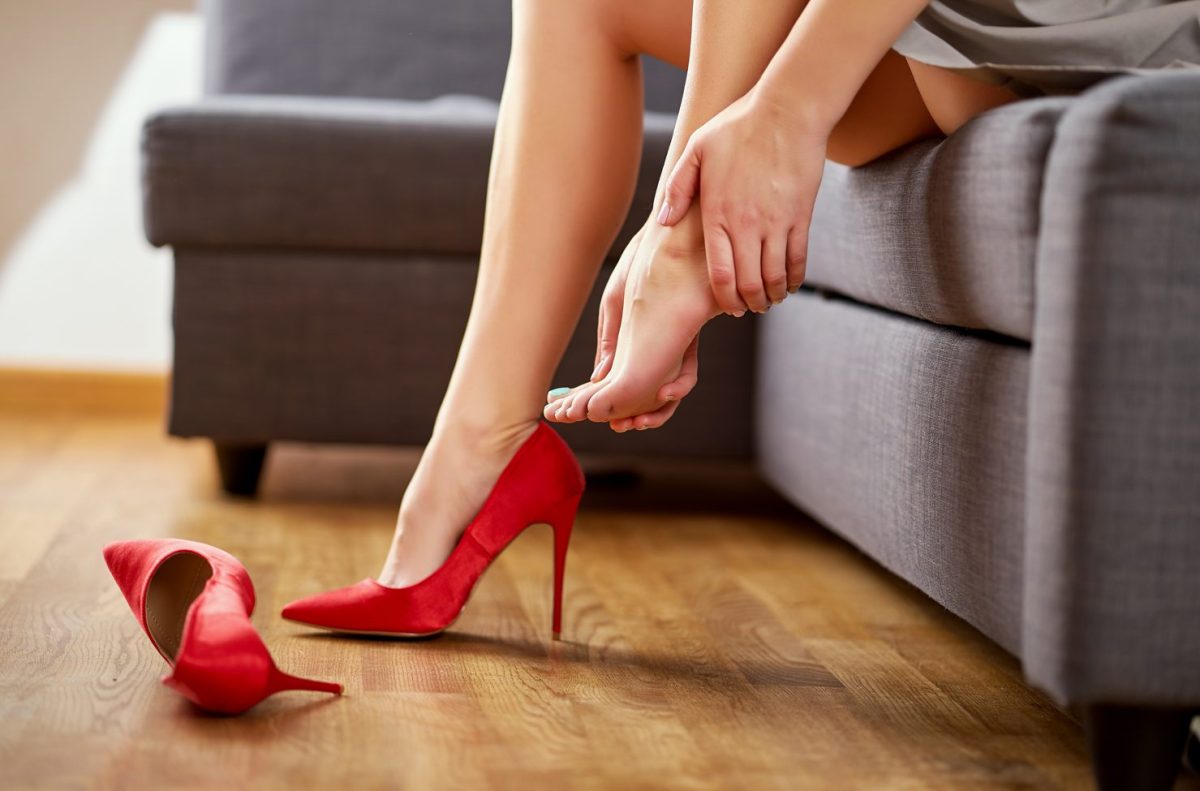
Finding the right shoe size is crucial for maintaining foot health and overall comfort. However, many individuals unknowingly wear ill-fitting shoes, which can lead to various foot problems and discomfort. In this article, we will discuss seven telltale signs that indicate you may be wearing the wrong shoe size. By identifying these signs, you can take proactive measures to ensure the perfect fit and enhance your foot health.
Persistent Foot Pain or Discomfort
One of the most obvious indicators of an incorrect shoe size is persistent foot pain or discomfort. If you often feel foot pain, it might mean that your shoes are either too tight or too loose. The pain may manifest as aching, burning, or throbbing sensations, particularly around the arches, heels, or toes. It is essential to address this issue promptly to prevent further complications.
Blisters, Corns, and Calluses
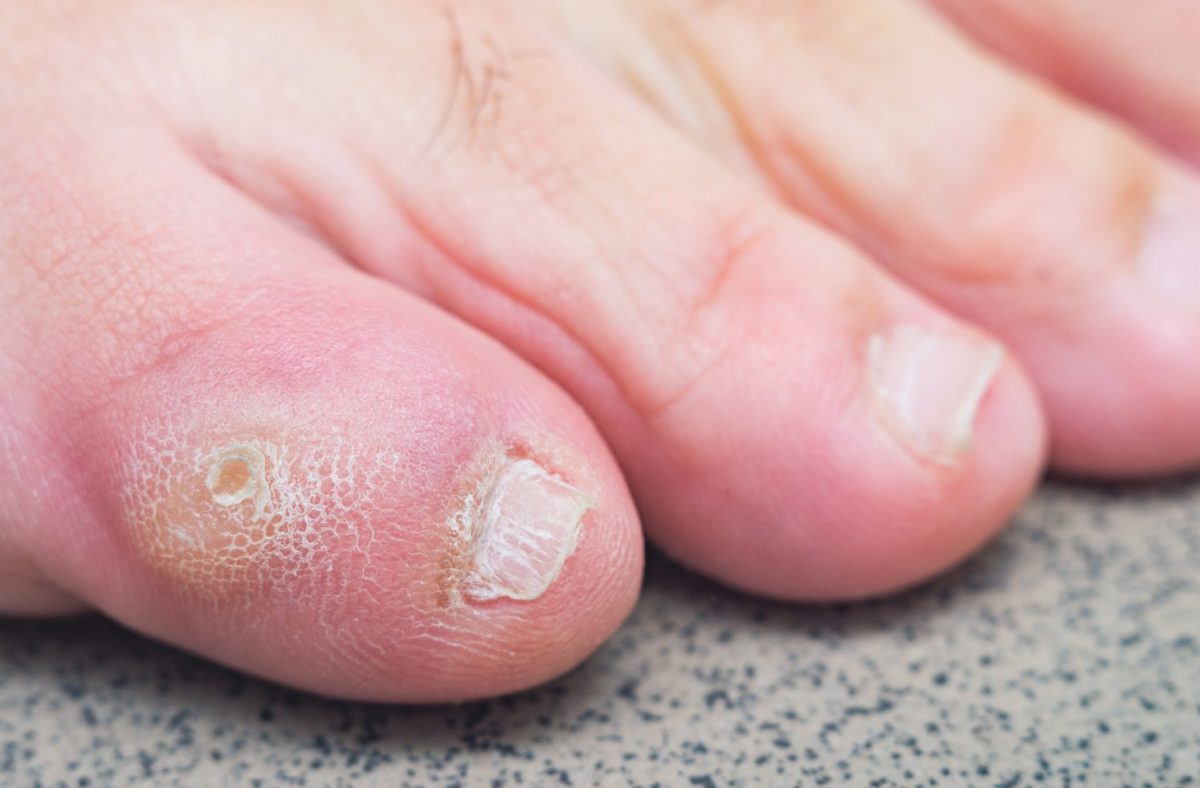
Blisters, corns, and calluses are common foot problems that can result from wearing shoes that do not fit properly. Blisters occur when the friction between your foot and the shoe leads to the formation of fluid-filled pockets on the skin. Corns and calluses, on the other hand, develop due to repetitive pressure and rubbing. If you frequently notice these issues, it is highly likely that your shoe size is incorrect.
Toe Abnormalities
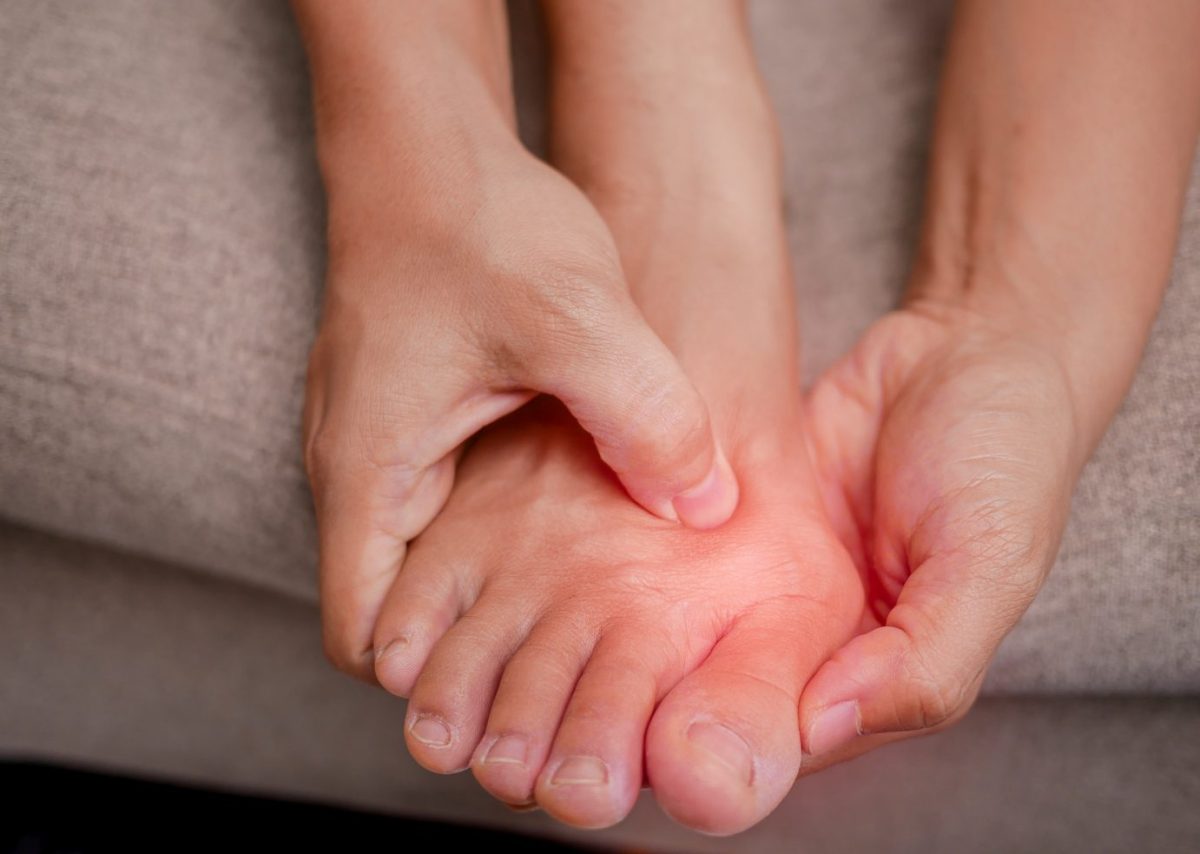
When your shoe size is too small, your toes may experience excessive pressure and become cramped. This can cause various toe abnormalities, such as hammertoes, ingrown toenails, or bunions. Hammertoes happen when the toe’s middle joint bends permanently, and ingrown toenails can happen when the nails grow into the skin. Bunions, characterized by a bony bump at the base of the big toe, can also arise from improperly fitted shoes.
Numbness or Tingling Sensations
If you frequently experience numbness or tingling sensations in your feet, it may indicate nerve compression due to tight shoes. Tight shoes can restrict blood circulation, leading to the sensation of pins and needles or a loss of feeling in the feet. Ignoring these symptoms can lead to long-term nerve damage, highlighting the importance of wearing the right shoe size.
Slipping or Heel Slippage
Conversely, sliding or severe heel slippage can result from wearing shoes that are too large. When your feet slide inside the shoes while walking or running, it can lead to friction and instability, increasing the risk of falls or ankle sprains. If you frequently find yourself readjusting your shoes or experiencing heel slippage, it may be time to reassess your shoe size.
Wear Patterns on Shoes
Examining the wear patterns on your shoes can provide valuable insights into the fit. Uneven wear on the soles, such as excessive wear on one side or the front, can indicate that your shoes are not distributing your weight properly. This asymmetrical wear pattern often results from wearing shoes that are too narrow or wide, emphasizing the need for a better-fitting size.
Visible Foot Deformities
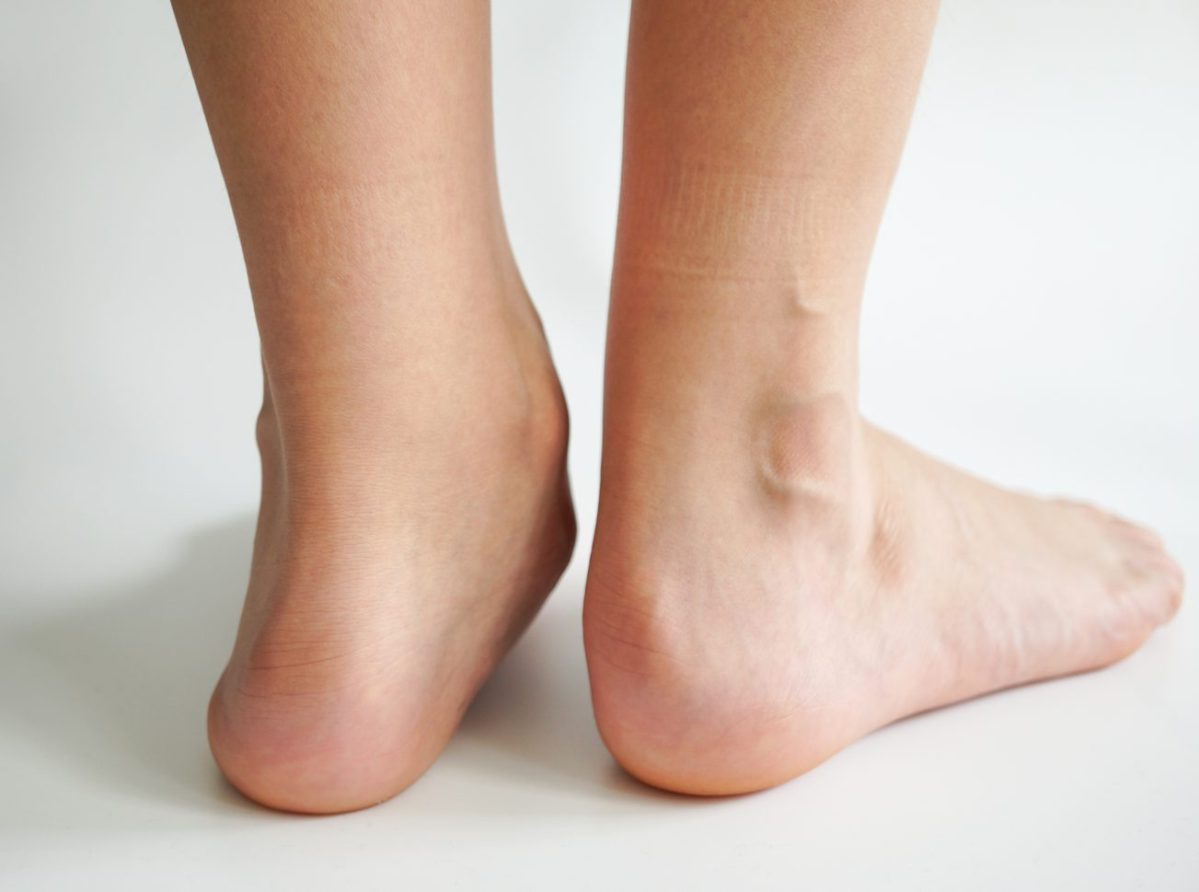
Wearing the wrong shoe size can exacerbate existing foot deformities or lead to the development of new ones. If you notice visible changes in the shape or structure of your feet, such as misalignments, protrusions, or collapsed arches, it could be a sign that your shoes are not providing adequate support or accommodating these conditions. Seeking proper footwear and sizing options can help mitigate these issues.
5 Factors That Influence How a Shoe Fits

Finding the perfect pair of shoes goes beyond mere style; it’s about achieving the optimal fit. Ill-fitting footwear not only causes immediate discomfort and pain but can also result in long-lasting foot issues.
Although shoe sizing follows a standardized system, it’s crucial to recognize that various variables can impact how shoes conform to an individual’s feet. Within this enlightening piece, we delve into five pivotal factors that significantly influence shoe fit, shedding light on their significance in the quest for the ideal match.
Foot Shape and Anatomy
Every individual has a unique foot shape and anatomy, which greatly impacts how shoes fit. Feet can vary in width, arch height, toe length, and overall structure. For example, someone with wider feet may find shoes with narrow widths uncomfortable. Likewise, individuals with high arches might require shoes with additional arch support. Understanding your foot shape and anatomy is crucial when selecting shoes that accommodate your specific needs.
Shoe Last and Design
The shoe last, which is the mold or shape around which a shoe is constructed, significantly affects the fit. Shoe lasts come in various shapes, such as straight, curved, or semi-curved. Different brands and models use specific lasts, and each can impact how a shoe fits on your foot. For example, a straight last may be more suitable for individuals with flat feet, while a curved last might better accommodate those with higher arches. The design features, including the toe box shape, heel cup depth, and overall volume, also play a role in determining the fit of a shoe.
Material and Construction
The materials used in the construction of shoes can influence how they fit. In contrast to synthetic materials, which may be less flexible, leather shoes have a tendency to stretch and conform to the contour of the foot with time. Additionally, the construction techniques, such as stitching, gluing, and the presence of overlays or seams, can impact the overall fit and comfort. It’s important to consider the material and construction of a shoe to ensure it aligns with your foot’s needs and preferences.
Sock Choice and Thickness
Socks are often overlooked but can significantly affect how a shoe fits. The thickness, material, and even the design of the socks can impact the space available inside the shoe. Thin socks might make a shoe feel looser, while thick socks can make it feel tighter. It’s advisable to try on shoes with the socks you typically wear to ensure a proper fit. Choosing appropriate socks based on the activity or weather conditions is also important to optimize comfort and fit.
Fit Adjustments and Lacing Techniques
Proper fit adjustments and lacing techniques can make a significant difference in how shoes feel and perform. Most shoes come with adjustable features such as laces, straps, or buckles, allowing customization for a better fit. Experimenting with different lacing techniques, such as the runner’s loop or heel lock, can provide additional support and improve overall fit. Making use of these adjustments and techniques can help fine-tune the fit of a shoe to better suit your individual needs.
Conclusion
There are several considerations when trying to obtain the ideal shoe fit. Understanding your foot shape, considering the shoe’s last and design, evaluating the material and construction, selecting appropriate socks, and utilizing fit adjustments and lacing techniques are all crucial steps. By paying attention to these factors, you can ensure that your shoes provide the comfort, support, and functionality you need. Remember, a well-fitted shoe not only enhances comfort but also promotes foot health and overall well-being.
FAQs
Can foot length be used as the sole factor in determining shoe size?
Foot length is a primary factor, but other factors like foot width, arch height, and personal preference also play a role.
Are shoe sizes the same across all brands and countries?
No, shoe sizes can vary between brands and countries. It’s important to refer to specific size charts for accurate measurements.
Which way should you round when choosing a shoe size?
It’s generally recommended to round up if your foot length falls between two sizes to ensure a comfortable fit.
Can foot size change over time?
Yes, foot size can change due to factors like age, weight gain or loss, pregnancy, and certain medical conditions. Regular measurements are advisable.
Do shoe sizes differ for men & women?
Yes, shoe sizes are typically different for men and women. Women’s sizes are usually smaller than men’s sizes.
Is there a universal conversion chart for foot length to shoe size?
No, there isn’t a universal conversion chart. Different countries and regions often use their own sizing systems.
Why do some shoe size charts include width measurements?
Width measurements are important as feet can vary in width. Shoes with a proper width ensure comfort and prevent foot-related issues.
What should I do if my foot length falls between two different sizes?
Consider trying on shoes in both sizes to see which one feels more comfortable. Additionally, consulting with a shoe fitting professional can provide valuable guidance.

